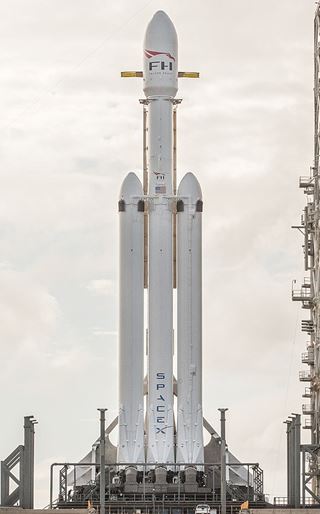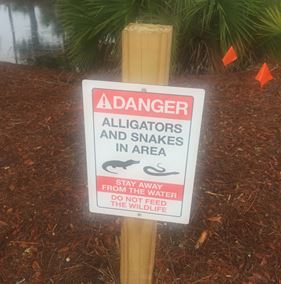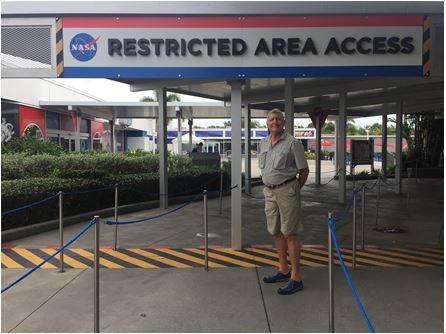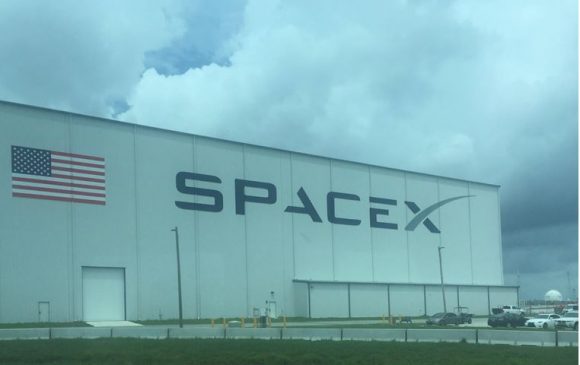It was an invitation I couldn't believe.
Would I like to watch the largest rocket on earth take off from Cape Canaveral, Florida, read the tease from Space X headquarters?
Specifically, I would view the launch from the Apollo/Saturn V Center some 3.9 miles from the launch pad.
Even at that distance I would have to stand behind blast proof glass. Before they started misting water around igniting rockets to help absorb the blast, windows 20 miles away were blown out.
The cheap seats are in a rusting grandstand astride an alligator invested swamp 7.5 miles away, a relic of the Apollo program of the 1960's and 1970's. Even from there, the force from a launch is impressive.
Space X founder Elon Musk sees the launch as nothing less than the first step by the human race towards becoming an interplanetary species. A colony on Mars is his first goal, followed by deeper space ventures.
The inaugural flight of SpaceX's Falcon Heavy, targeted for Tuesday, February 6, 2018, is one of the most anticipated launches in history.
The rocket will carry into deep space a 2,000-pound Tesla Roadster. Why is Musk doing this? Because he can. Actually, the payload is a test for future commercial launches which are already lining up.
The US Air Force, Saudi Arabia, and Inmarsat, a British communications company, have already contracted to have the Falcon Heavy lift satellites into orbit.
Those of a certain age can only compare the Falcon Heavy to the Saturn V rockets of a half century ago. That program was run by Dr. Werner Von Braun (who I met as a kid at a homemade rocket contest), the man responsible for Hitler's V-2 rocket program.
Those of a certain age can only compare them to the Saturn V rockets of a half century ago. The Saturn program was run by Dr. Werner Von Braun (who I met as a kid), the man responsible for Hitler's V-2 rocket program during WWII. Even now, I remember taxiing my plane over the rails of V-2 launch sites at the airports of French Channel ports. They're still there.
At its peak The Saturn and the rest of the US space effort cost as much as 0.5% of US GPD per year, or some $100 billion in today's money. The Saturn produced 1.5 million pounds of thrust and is the only rocket ever to carry a man beyond earth orbit.
The Falcon Heavy has 3.42 million pounds of thrust and a geostationary payload of 14,000 pounds. But at $90 million it costs a tiny fraction of America's first space program. You can thank imaginative design, advanced materials, and super smart software.
The Falcon Heavy is in fact three Falcon 9 rockets strapped together to create a 27-Merlin engine behemoth. This enables economies of scale that has dropped the cost of sending a payload into orbit by 90% compared to existing government contracts.
The secret to Musk's many visionary ideas has always been manufacturing processes and techniques that are light years ahead of anything previously tried.
The first time I ever saw an industrial use of a laser printer for the production of a rocket engine from a single block of alloy metals. This eliminates the need for welds to hold up in extreme temperatures, greatly increasing reliability.
It helps also that Elon's rockets are reusable, instead of uselessly breaking up over the ocean below. That's why Boeing (BA) and Lockheed Martin's (LMT)'s United Launch Alliance are still billing the government $400 million per trip, for half the payload.
Space X's drive into the brave new world has not been without its setbacks. Musk almost cancelled the program after a series of explosions ate up the company's entire capital. Musk only had enough money for one more launch in 2008.... and it was a success.
Space X's incredible low-cost basis makes a number of ventures commercial viable for the first time, including asteroid mining, zero gravity manufacturing, and yes, space tourism.
Loftier goals are ahead. Space X plans to launch the reusable Dragon capsule in 2019, the first commercial manned space effort. Among the six passengers will be two as yet unnamed billionaires who have paid ten digits for a private trip around the moon.
After the Falcon Heavy, Space X will build another rocket that is twice as big known at the BFR. One can only imagine what this stands for. This will be the vehicle to colonize Mars and beyond.
Musk say that he plans to retire on Mars, at best an arduous nine-month one-way trip. Spending three quarters of a year with the irascible Musk, who I have known for many years, is easier said than done, especially if he is in the driver's seat.
As for stock plays you are going to have to wait a while. Private rocketry promises to be a rich man's game for the foreseeable future, with Amazon's (AMZN) Jeff Bezos and Virgin's Sir Richard Branson the only other players.
While there is no immediate stock play here, there are dozens of space-based ventures in the San Francisco Bay area currently underway. One may be headed your way as an initial public offering sometime in the not so distant future.
Until then, it will be important to follow the technology. It is also a lot of fun to watch.
To learn more about Space X please visit their website by clicking here.
To live stream the Falcon Heavy launch on February 6, please click here.
To buy your own tickets to the Falcon Heavy launch please click here at the NASA website.
Only the cheap seats are still available. Watch out for the alligators.







